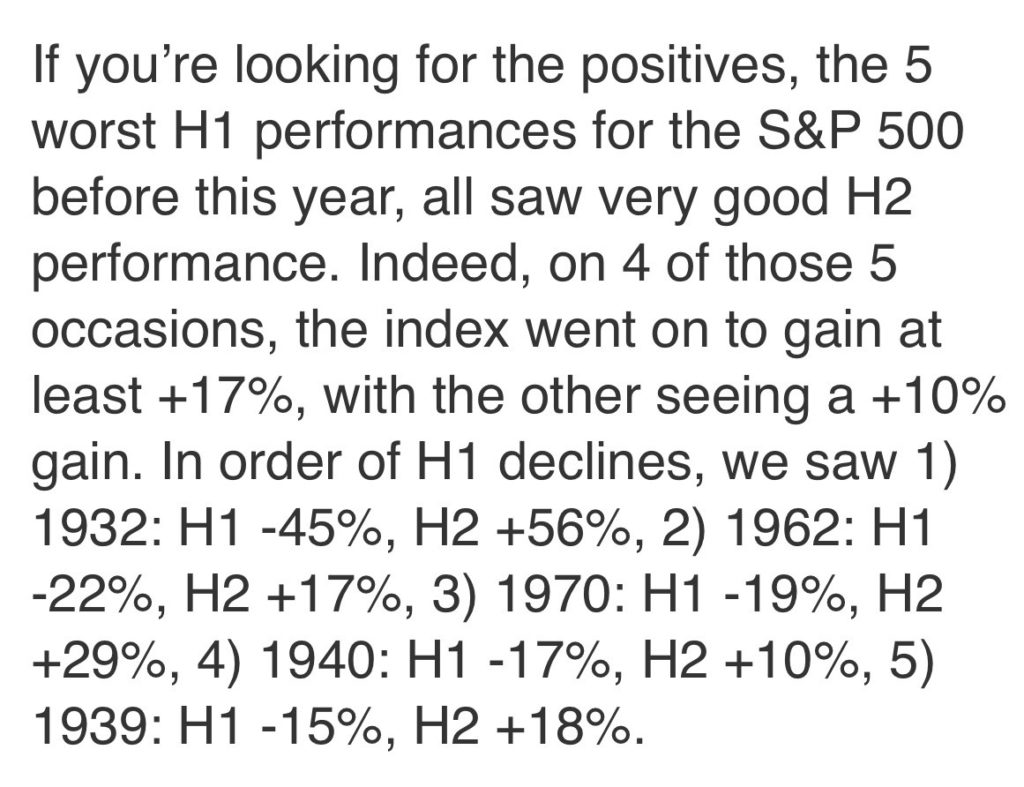Dave Newman, Hedge Fund Telemetry contributor

It’s been a minute, so. let me apologize in advance. As I noted last year when I began, my goal in providing content to Hedge Fund Telemetry and its subscribers was to help them navigate the markets with a wider lens and these markets have not materially changed since my last piece. We are in tightening mode, and the process of cleansing excesses, with the growing possibility of tipping the economy over into recession. I also had a lot of personal stuff to deal with – graduations, moving back north for the summer/early fall, dealing with Covid, class re-unions, moving kids (still ongoing), and the death of a dear friend that sidetracked me for a bit. My trading activity was extremely light and my YTD returns are still around 9%.
I don’t want to re-state my broad calls/assessments from the past year or so but in my last piece entitled “Are we there Yet” I explicitly said no, and stocks were about 10% higher at the time. There were many factors in my mind, some of them I will go into below, but a lot of it was a gut feel around flows and market psychology. Simply put, I thought (and still largely think) that the market has not shifted from the post-GFC/Covid mindset that Central Banks would come to the rescue, and could lean against broad deflationary trends. Nowhere was this more true than with the ARK funds where investors kept pouring money into it or continued attempts to short squeeze cruddy situations (such as Chapter 11 Revlon). To me, that is all a reflection of using old playbooks for the new market dynamic. And, while that can work given the nature of bear market rallies, it is not going to change my thinking, which is that highly speculative activities are unlikely to have the positive expected value.
That being said, it is also true that long-term investors would be wise to begin the allocation process of moving out of cash from here down to say 3000 in SPX, it is hard to see a durable bottom forming for short to medium-term investors until the Fed feels it has accomplished its objectives. That its objectives are rooting out inflation (some of which it cannot affect) and seeing as Powell said, “positive real rates across the maturity spectrum” should be taken as literally as Draghi’s “will do whatever it takes” in the opposite direction. And, while I am well aware of what Powell did in 2018, and that the impacts of higher rates may be present already in some markets such as real estate, we also have to keep in mind that inflation is about 4X greater now than it was then, and he has no choice but to stay the course, which will likely mean tightening even as growth slows.
To bring inflation down will require resolving that the market is pricing and the Fed is now closer to posting the latest dot plots, but in a leveraged system where financing becomes more expensive, investor psychology shifts, and risky asset premiums are still low-ish given growth risks (as MS highlights below), the liquidity tide is rolling out and that tends to uncover market idiocy/lunacy and can bring about distress. All of that is playing out in some pockets (non-profitable growth, crypto), and I suspect it will continue.
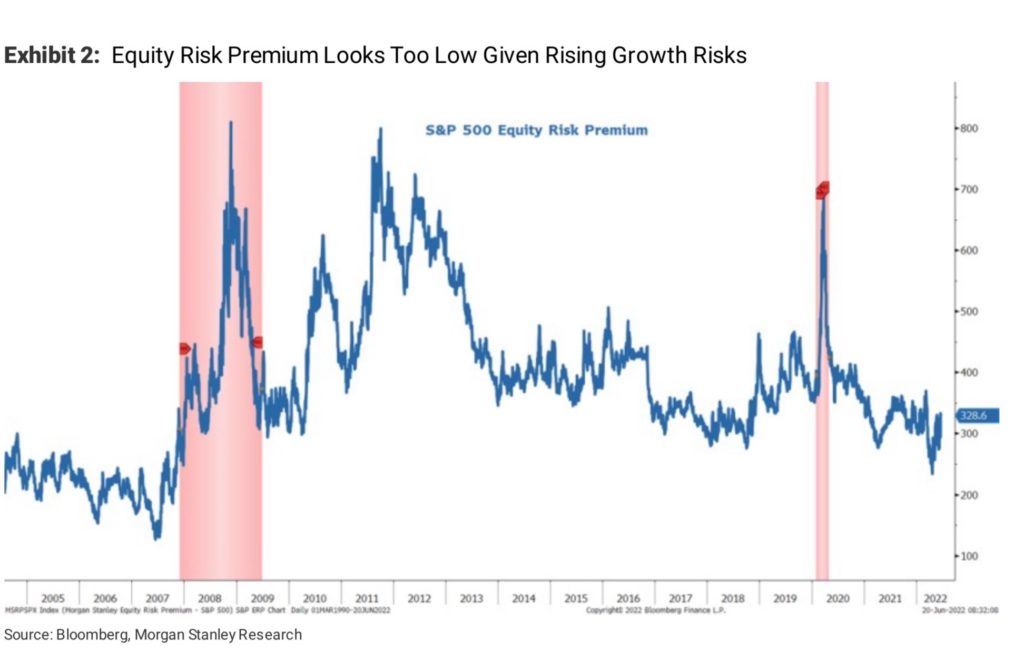
MS scenarios
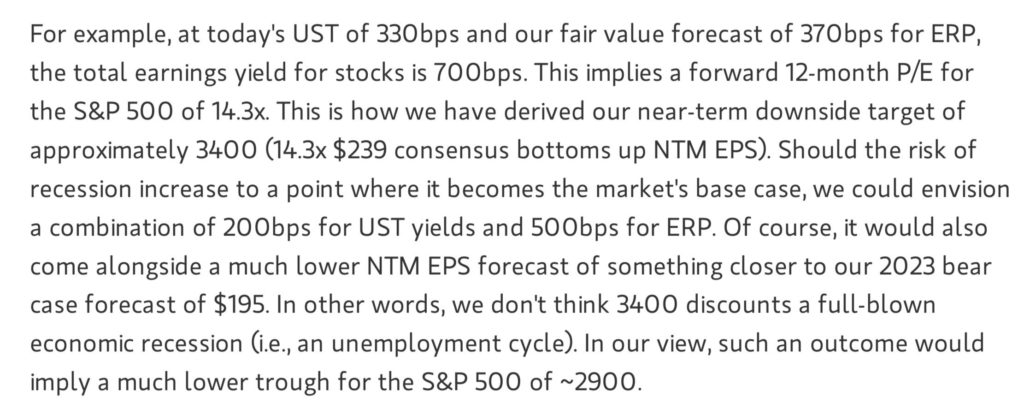
Things that caught my attention this past week:
Flows:
As we can see below, equity flows remain positive, while money has moved out of the credit markets.


A longer-term view on the equity side:

Here is a slightly different way to internalize the chart above:

So, if real money as derived from the tables/charts above has not been selling stocks, then who is? It is hard to know exactly, but from what I have been able to gather, it appears to be de-risking by hedge funds of all types. MS Prime Brokerage highlighted:

Private Equity and VC
The public equity and credit markets are not the only markets to keep an eye on. Private markets are as well. On that score, we are seeing retrenchment there. Orlando Bravo of large P/E firm Thoma Bravo (focused mainly on large-cap software/tech) noted a few weeks ago that buying companies at 4X revenue will in hindsight prove the purchase of a lifetime, only to recant that comment a few days ago stating that “there is more pain on the horizon.” Higher rates/economic uncertainty tends to sharpen pencils and reduce investor optimism. IPO markets are dead. SPACs are now a four-letter word (I invested privately in SoFi and sold post-SPAC thankfully). The good news for P/E is that investors have come to expect these ebbs and flows, and the current market is not the worst time to be investing, but exits will be few and far between for a while. And, the growth of secondary funds (some under the same umbrella as existing funds) is providing some outlets, as highlighted by this piece in the FT.
VC markets are something I have some exposure to and are another area where valuations and flows are resetting to a different environment. The interconnection to broader markets is partly psychological (I am mentally marking down possible returns and lengthening holding periods), but also based upon inflation and rates not as willing to put more into similar assets. My illiquid portfolio is roughly 8% of my net worth, so I am jacking up my hurdle rates for future investments. Given most VC/PE type investments are called but not always allocated (and 90% of my illiquid stakes are managed), I figure I will benefit over time from this decompression of multiples anyhow. We shall see.
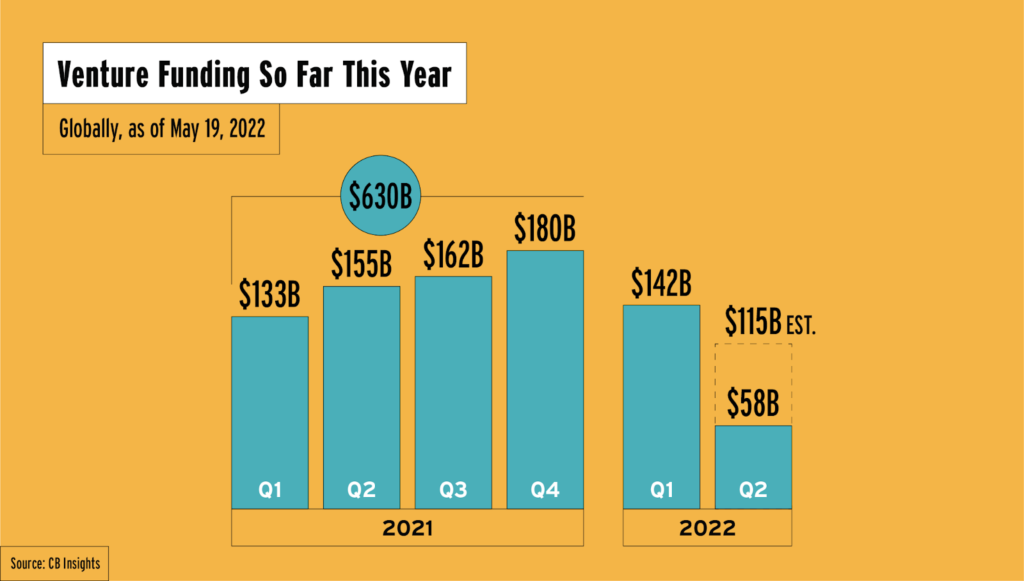
Does the market have the right Fed Fund terminal rate priced?
Of course, it is hard to say, and it depends upon some pathways that are difficult to handicap (Powell mentioned as much). Some commentators post the 75bp hike believed that the market could rally given the spread between where the market was and the Fed, reduced uncertainty, and since markets hate uncertainty, they figured it was a good time to buy risk assets. And, in fact, they rallied during the Powell presser and up until 4 am NY time when it was surmised that somebody in Europe (possibly the SNB) was cutting US equity exposures which reversed the rally.
The immediate market movements are not particularly significant when compared to Fed commentary which clearly was unnerved by the most recent inflation prints and pickup in inflation expectations, and uncertainty around reversion to target.
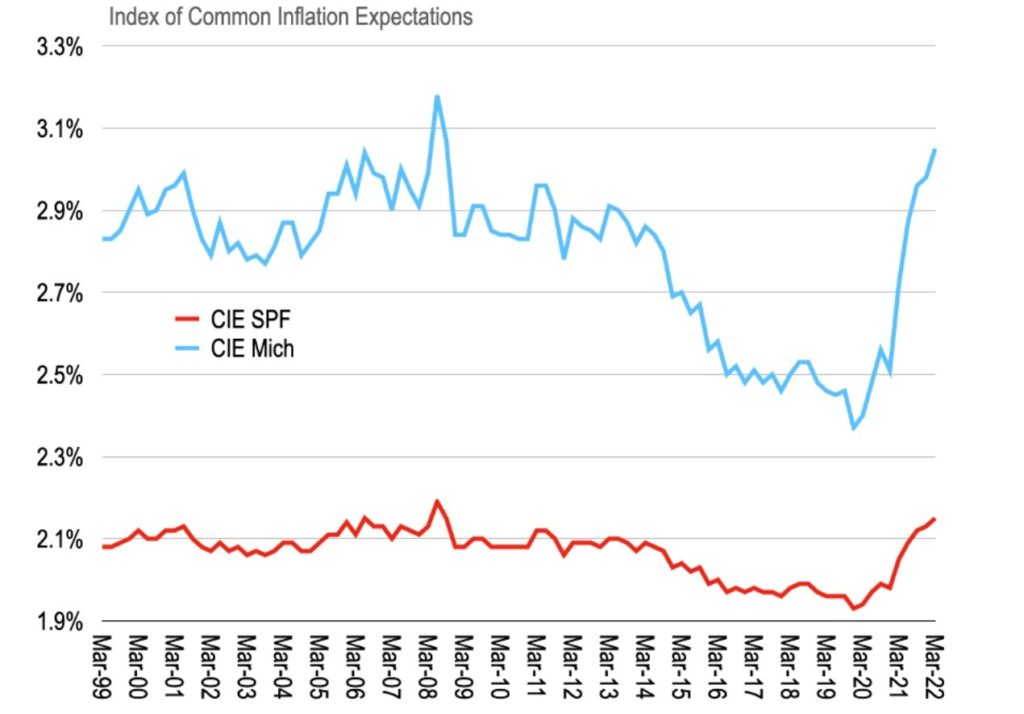
But, putting that aside, what has to be most concerning to the Fed is that while there is a bit of pullback in goods inflation, service and wage inflation are problematic and suggest inflation is likely to stay elevated for a while. As the chart below notes, this is the spiral the Fed does not want to get any worse.
Jeff Gundlach at DoubleLine is expecting a 9% print in the next few months! I personally have no idea where and when inflation peaks, but if the Fed wants real rates positive across the curve, then 4% may be too low. Research by Larry Summers suggests as much, given the experience of the 1970s, with the added factoid that consumer balance sheets and labor markets are in better shape, so demand destruction may take longer than anticipated.
In fact, here is a snippet from Ex Ante Research that suggests rates could peak at around 5.5% as long as housing and labor markets stay somewhat buoyant.
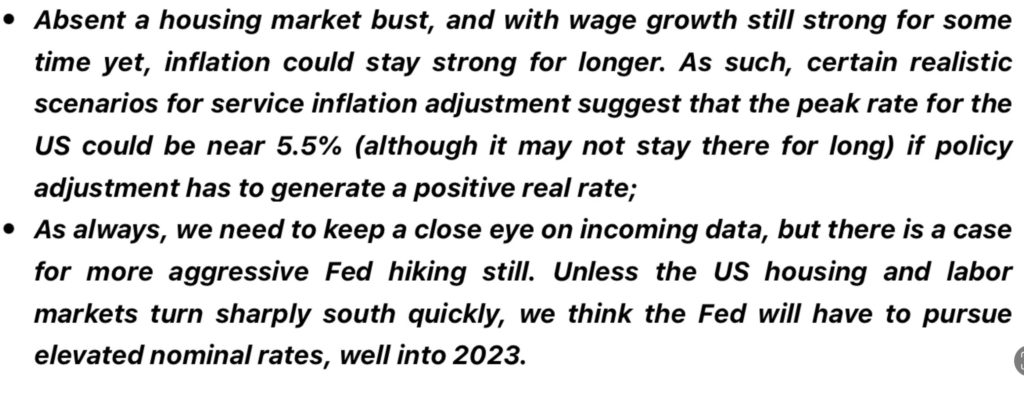
Now, I read a blog that suggests the Fed cannot go that much, and that housing markets are already starting to show signs of stress as affordability falls. This chart below could lead one to believe that a housing bust is around the corner.

But, housing markets are less leveraged to rates via ARM/teaser type products and generally higher credit quality, and inventory is still very low (see below). Plus, the added demographic wave from the large millennial cohort who want yards for their kids to play in and can work more remotely.
Here are some good charts that suggest these markets bear watching, but by no means in bust territory.
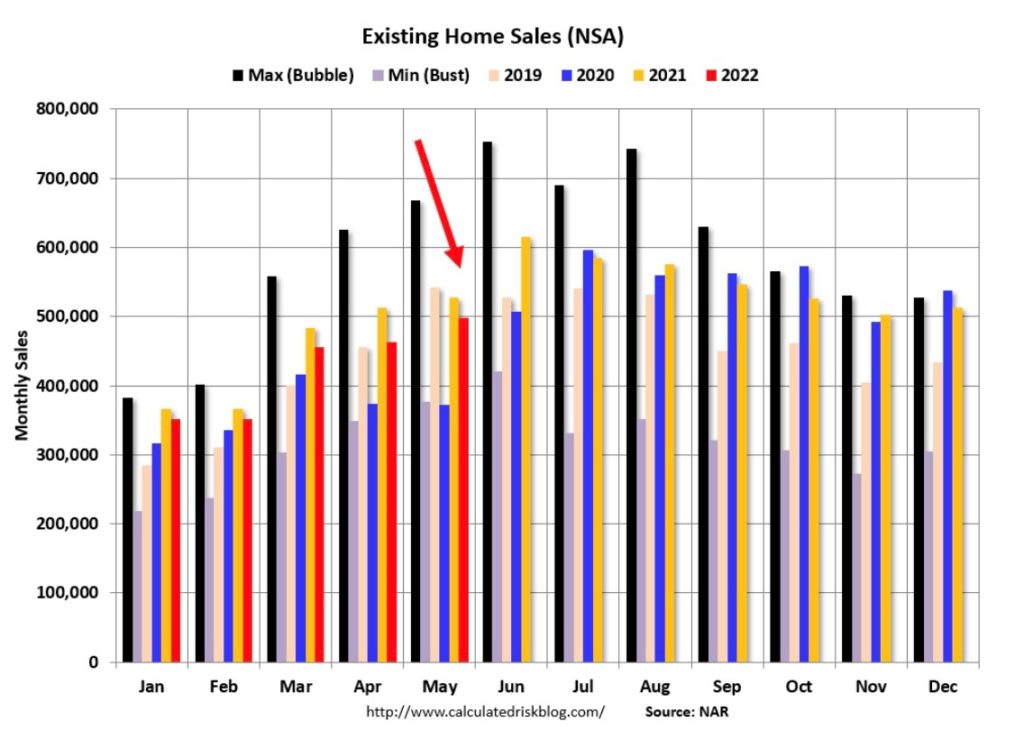
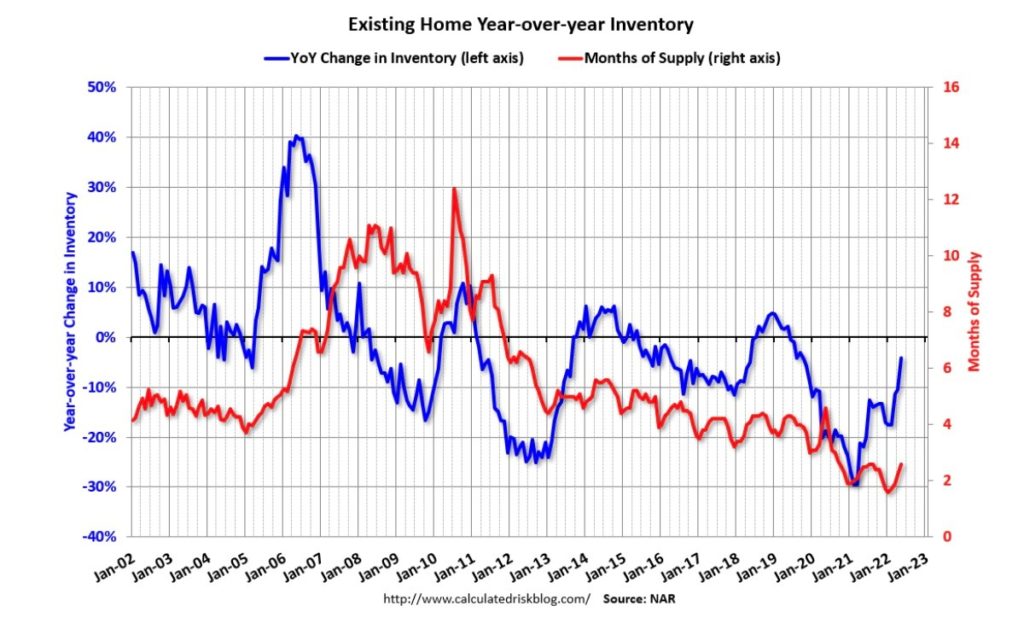
As it relates to labor markets, here is a good chart also from Ex Ante on services inflation (ex housing) and wage inflation (that 70’s feeling). The implication is that while we are unlikely to get a spiral given what the Fed has already committed to, it needs to stay the course.
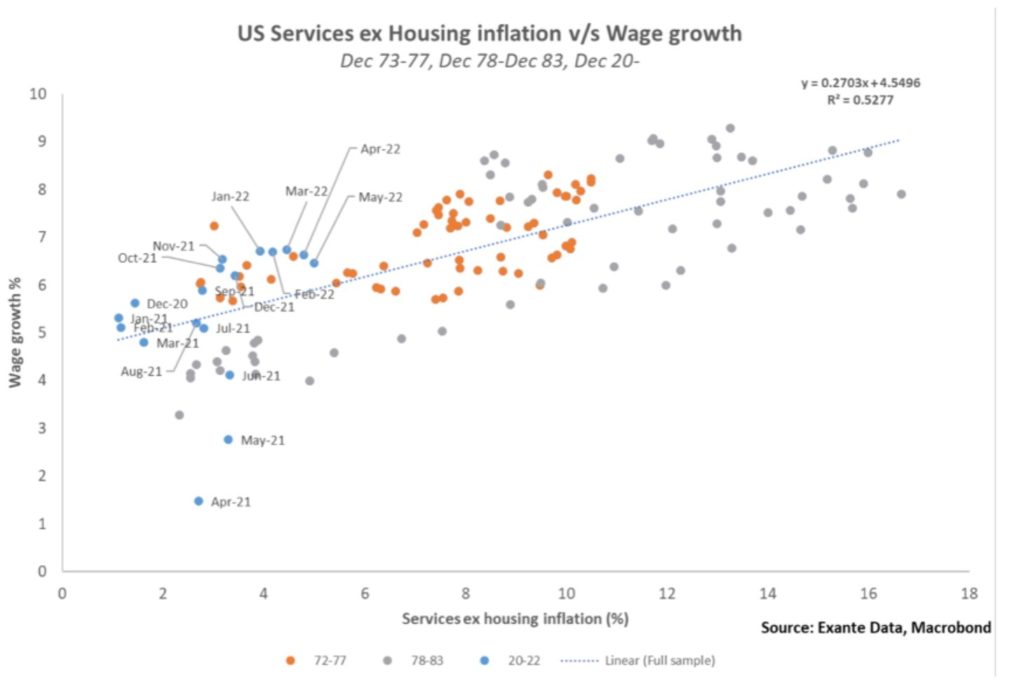
For a different tact on the discussion of inflation, what the Fed is doing (which I don’t think it has a choice), and what the results of these actions are likely to be, read the latest from Ray Dalio.
Crypto:
My writings on the subject have been very consistent and I dabble from time to time in crypto as to me it is a trading widget but is still an unproven segment. This shakeout reminds me of other bubbles that popped, but I am reminded that other similar historical periods (railways in England for example) had useful bubbles, in that the underlying technology and premise were good, but too much investment, over-leveraged and over-hyped. Even there, it is still too early to say how it will all shake out and how this ecosystem will evolve. Here is a snippet from an FT article that highlights the scale of money being thrown into this ecosystem:
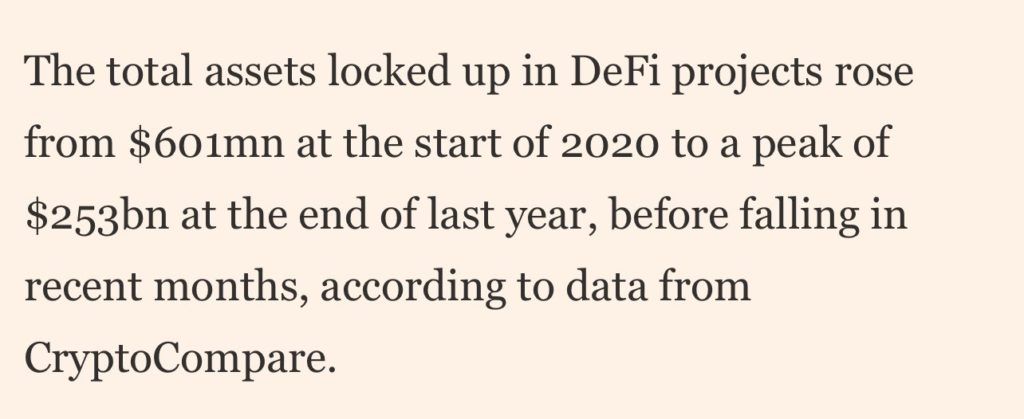
– On the technology side, I suspect there are some benefits to tokenization of illiquid assets and other use cases that will make payments faster/cheaper, etc, but I prefer to invest in discernible companies that can throw off returns.
– Online identity – the idea that online identities are the mega trend of the 2020s in that people will spend more and more time online and will want to show themselves. Call me cynical with this.
– On the store of wealth side, I guess taking a more liberal view of it all could suggest if you got in early enough, then even at BTC = $20K or so, it has been a good inflation hedge. But, on a more narrow and recent basis, it is clear that it is not performing well in that regard.
– The DeFi ecosystem – as we saw with Terra/Luna, Celsius, Three Arrows Capital (3AC), and the retrenchment by crypto companies (Coinbase, Crypto.com, BlockFi), we are learning more and more about the space and the pressure points. As my parents used to say, “it is all fun and games until somebody breaks a lamp or gets a black eye.”
The bottom line is that the overall ecosystem is just not in good shape. Tighter financial conditions (given the high correlation to risky assets) and higher rates overall is not supportive. As I have written before, these are unregulated, uninsured markets and maybe that is as financial libertarians want it. But, that brings to mind the quote that “there are no atheists in a foxhole.”
And, while the market may have gotten a bit of respite as Sam Bankman-Fried has been doling out credit lines akin to a modern-day JPMorgan, Morgan himself was aware of the limitations of these arrangements. I distinctly recall 2007 when Bear Stearns first started showing signs of weakness, and Joe Lewis, the famed UK FX Trading Billionaire, bought $1B worth of Bear stock, only to see it vaporize in short order (to Jamie Dimon at JPM with Fed support). For many in the crypto universe, this is about survival, and there could well be some good projects out there facing cash crunches/outflows, but like 1907 with trusts, leverage, pump and dump, and informational asymmetries that suggest we have not come close to seeing the worst of this all. Not to mention, these arrangements move toward more centralization/concentration than crypto evangelists mentioned was a selling point vs current arrangements.
Anyhow, holders generally are not doing so well, and miners are cashing out to a greater degree. Here are some charts from Macro Hive on the subject worth highlighting. Seems at an important juncture, and higher rates (costly leverage) and concerns over access to wallets/holdings, lack of cash flow generation/clear future use cases and valuation, hard to see outside of risk rallies that this does not continue to head lower.

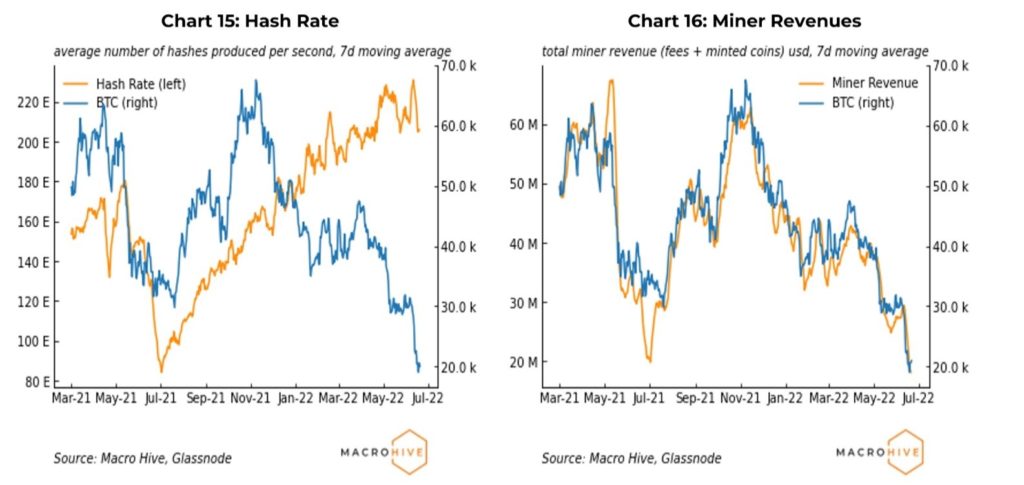
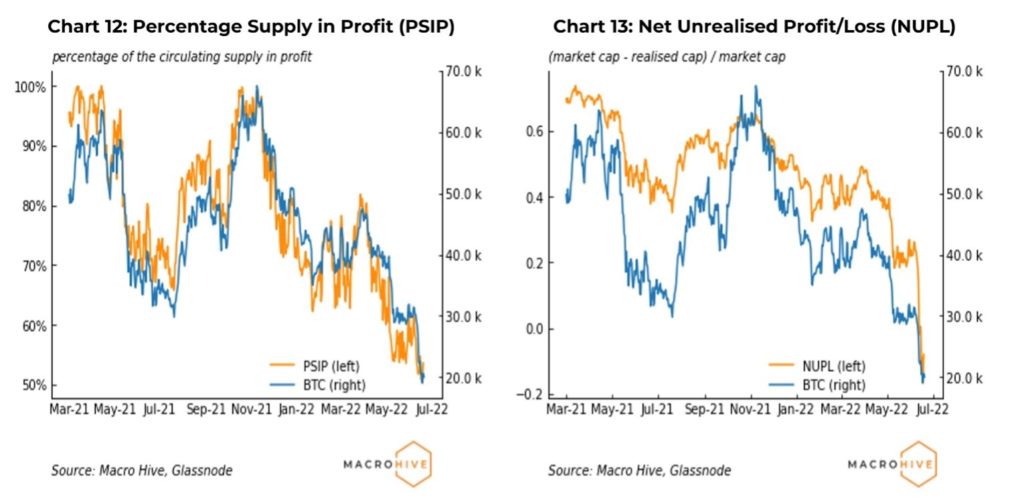
Other Tidbits:
Nuclear is a part of the solution
As I have written, CCJ is one of my core holdings. It is getting hammered. I have been trading the position (selling on rallies, buying on dips around a core holding) and have been accumulating recently. Amusing to me that Germany would fire up more coal plants given the supply constraints from Russia, but other countries (including Japan) appreciate that nuclear is a key part of the clean energy solution, as this article states.
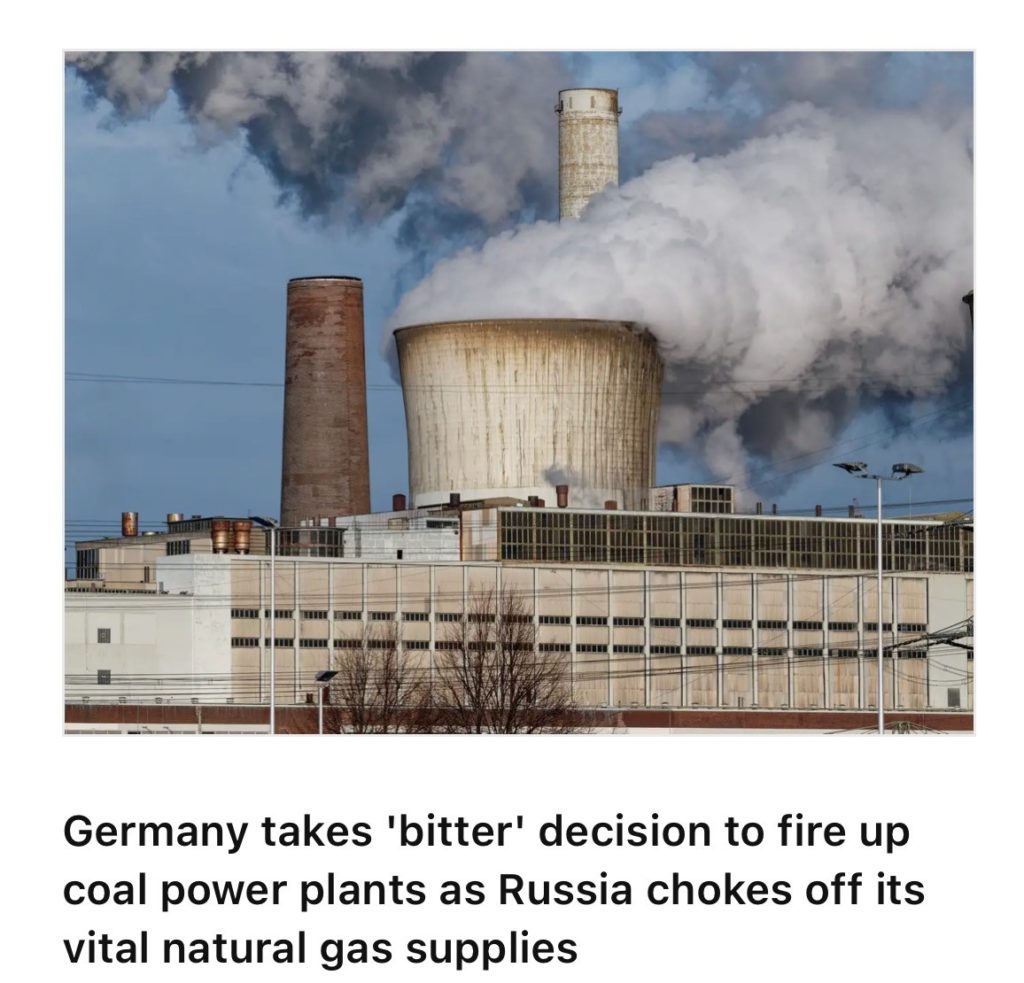
1M Rent Stabilized/Controlled Apartments in NYC undergoing large rate hikes:
Like we saw with social security benefit hikes (or possible tax holidays on gasoline), the desire to manage inflation (or seen to be trying to manage inflation to limit political damage) tends to reverberate into more corners of the economy. And while these rent hikes are not bad compared to non-controlled property, they are the greatest seen in a generation. Chances are, these hikes are happening in properties that due to rent stabilization and increasing costs, are less well maintained, and inhabited by residents already being squeezed hard. . And, and for social security, note the 8.6% bump!
Semiconductor Security:
If we have seen anything with CoVid and Russia, it is that we clearly need to insource more risk control from our manufacturing and supply chain. Here is a good article that suggests we ought to do more to manufacture chips. . It is all pretty obvious stuff, and it requires action.
House Passes Bill to expand Fed Mandate:
This type of legislation to expand the Fed mandate to include racial equity does not have a good shot at passing the Senate, but it is always interesting to keep an eye out for what parties are prioritizing and whether such priorities are disconnected from key issues that voters appear to be most concerned about.
I have remarked other times about the SEC (who barely does its job well) getting into the climate change game and requiring more climate disclosures/risks for public companies, and other attempts to put the political narrative into action. (For a fun read on this type of thing, see Andy Kessler from this week’s WSJ titled “Bees are Fish and Other Fake Narratives). But, the one thing that is incredibly obvious is that the Fed has a hard enough time managing its dual mandate (Powell certainly got pressed on that Wednesday), so hard to see the logic/timing for this legislation. Anyway, here is the WSJ editorial on that story a snap of the article.

Of course, I am well aware of the editorial slants from every major publication and the WSJ is quick to highlight these things and the liberal media pays it no mind. And, I have written that the Fed screwed the pooch big time, so having better oversight of what the Fed is helpful, it is just that asking them to consider more sub-elements of the economy can cause further mission creep and ineffectiveness.
I just finished reading “The Lords of Easy Money” by Christopher Leonard, which talked about the decision by Bernanke to do QE in 2011 as “insurance” because growth and inflation post-GFC were not evolving as hoped, and fiscal policy was constrained (sequester), which interestingly, Powell himself was very concerned about because it did not need to be done and opened up more risks, some of which we see today.
So, putting the Fed on the front lines of these distributional issues may be smart politics, but it is not a good policy and could impact its ability to maintain inflation credibility. Once again, inflation is > 4X target, and sure, there are exogenous/supply factors that Powell must consider and where he cannot directly affect, and some will get hurt more than others due to Fed actions (as always) but they have no choice right now – until inflation moves meaningfully toward the target – but to continue on this path.
Analogs and such:
A few caught my attention and wanted to highlight them. It is horses for courses/mixed bag at this point, perhaps suggesting we could see potentially very choppy/directionless markets for a bit. We should get some end-of-month pension rebalancing given the sizes of the down move, but then we will go into earnings season as well. EPS estimates don’t seem to still be in the +7% range (implying the move has largely been multiple repricing), so results and guidance should be the next catalyst broadly.
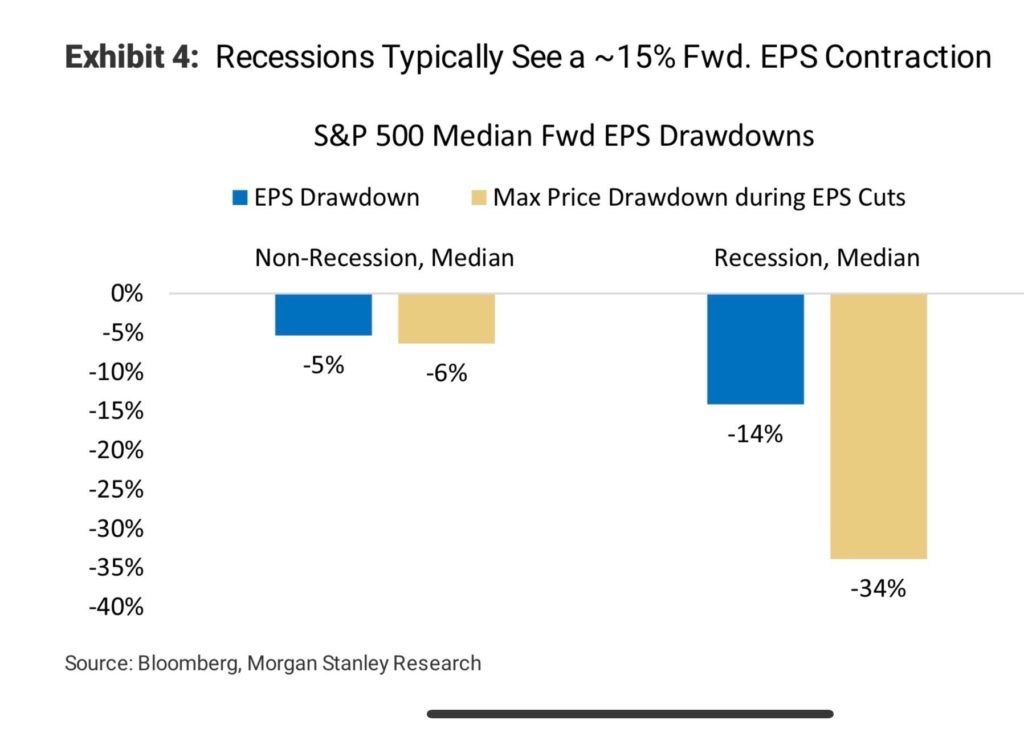
The caveat with the chart below is they are 20-80th %ile movements. So, given where we are coming from, in terms of valuation, the persistence of inflation, tightening cycle, and positioning, we may be in outlier territory in terms of possible downside outcomes.


